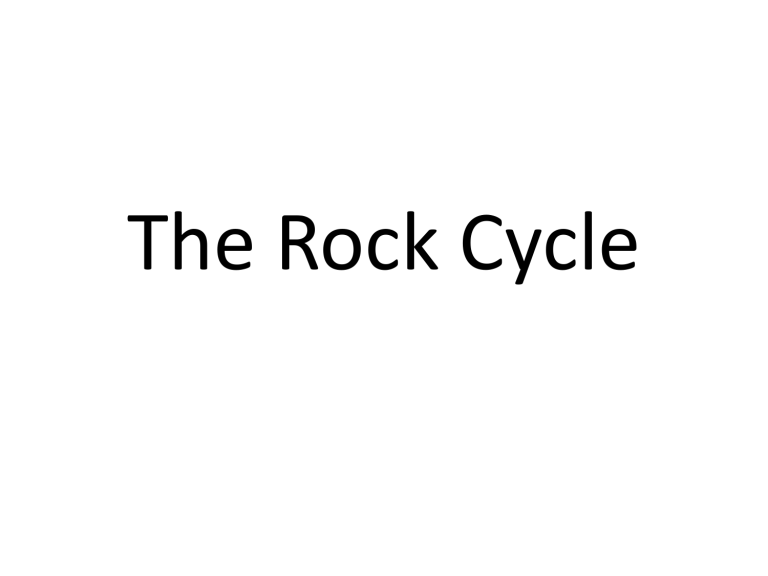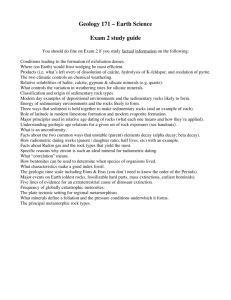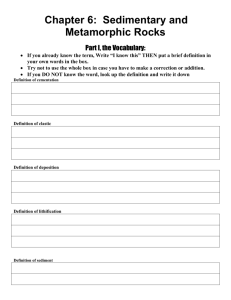The Rock Cycle

The Rock Cycle
The Rock Cycle
• Igneous Rocks – cooled magma or lava
• Sedimentary Rocks – pieces of other rocks or from minerals dissolved in water
• Metamorphic Rocks – heat and pressure; not completely melted, but are re-shaped while soft.
The rock cycle is the continuous changing and remaking of rocks.
Formation of Sedimentary Rocks
I.
Clastic Sedimentary Rocks
A. Pieces of rocks carried by an agent of erosion
1. Water
2. Wind
3. Ice
4. Gravity
B. Sequence of rock formation
1. Weathering
2. Erosion/transport
3. Deposition
4. Burial & Lithification
Formation of Sedimentary Rocks
Erosion and Transport
Deposition
– Deposition occurs when sediments are laid down on the ground or sink to the bottoms of bodies of water.
– Sediments are deposited when transport stops.
– As water or wind slows down, the largest particles settle out first, then the next-largest, and so on, so that different-sized particles are sorted into layers.
– Since wind can move only small grains, sand dunes are commonly made of fine, well-sorted sand.
– Sediment deposits from glaciers and landslides are not sorted because both move all materials with equal ease.
Formation of Sedimentary Rocks
Lithification
• Lithification begins as the weight of overlying sediments forces the sediment grains closer together, causing the physical changes.
• Layers of mud shrink as excess water is squeezed out.
Formation of Sedimentary Rocks
Lithification
• Sand resists additional compaction during burial.
• Grain-to-grain contacts in sand form a supporting framework that helps maintain open spaces between the grains.
Formation of Sedimentary Rocks
Lithification
• Cementation occurs when minerals grow & cement sediment grains together into solid rock.
• A new mineral, such as calcite
(CaCO
3
) or iron oxide (Fe
2
O
3
) grows between sediment grains as dissolved minerals precipitate out of groundwater.
• Existing mineral grains grow larger as more of the same mineral precipitates from groundwater and crystallizes around them.
C. Features of Sedimentary Rocks
1. Bedding (Layers) a. Graded; sorted by size b. Unsorted; mixed sizes
Deposited by wind or ice
2. Fossils-sed. rocks are the only type with fossils
II. Chemical Sedimentary Rocks – usually evaporites, like Halite (rock salt)
III. Organic Sedimentary Rocks – once living material. Examples:coal and limestone.
IV. Types of Metamorphism
A. Hydrothermal; hot water
B. Contact; touching magma
C. Regional; Plate Tectonics
Metamorphic Rocks
III. Many metamorphic rocks are foliated.
This means that they have flattened crystals.
– Foliated metamorphic rocks are characterized by wavy layers and bands of minerals.
Metamorphic Rocks
Other Possible Paths
• There is more than one path in the rock cycle.
• The rocks of Earth’s crust are constantly being recycled from one type to another.
• The processes that help shape
Earth’s landscapes are also part of the rock cycle.








